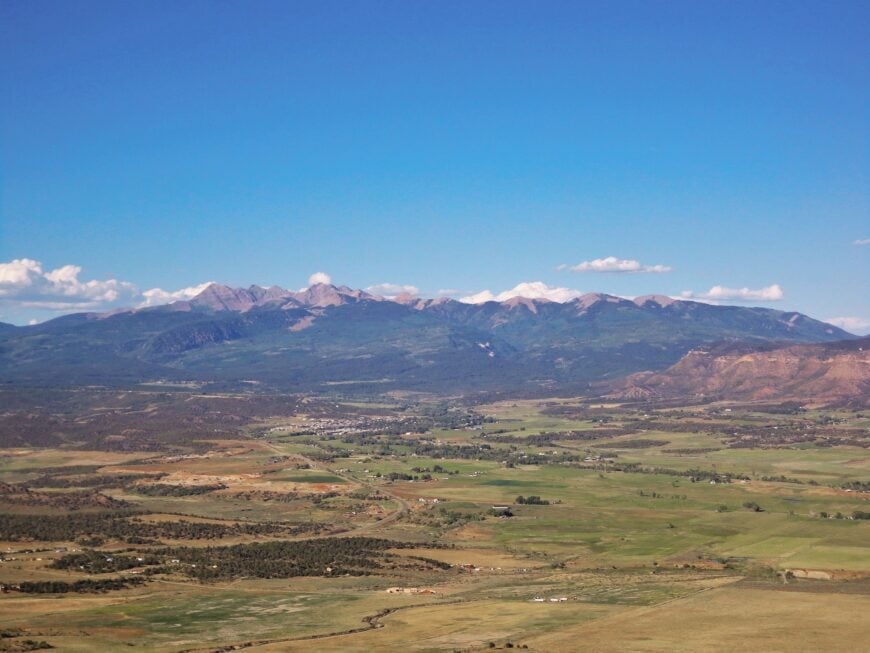
If you’re looking to escape the hustle and bustle of city life, Southwest Colorado is home to some of the most serene and hidden towns I’ve ever come across. Nestled among majestic mountains, lush forests, and expansive meadows, these towns offer a tranquil retreat into nature’s untouched beauty.
From stargazing under clear, unpolluted skies to exploring rich histories in former mining communities, I find that each of these secluded spots provides a unique experience that rejuvenates the soul.
Join me as I count down my top ten secluded towns in this breathtaking region, each with its own charm and allure waiting to be discovered.
10. Hesperus: Quiet Countryside Living Under Starry Nights
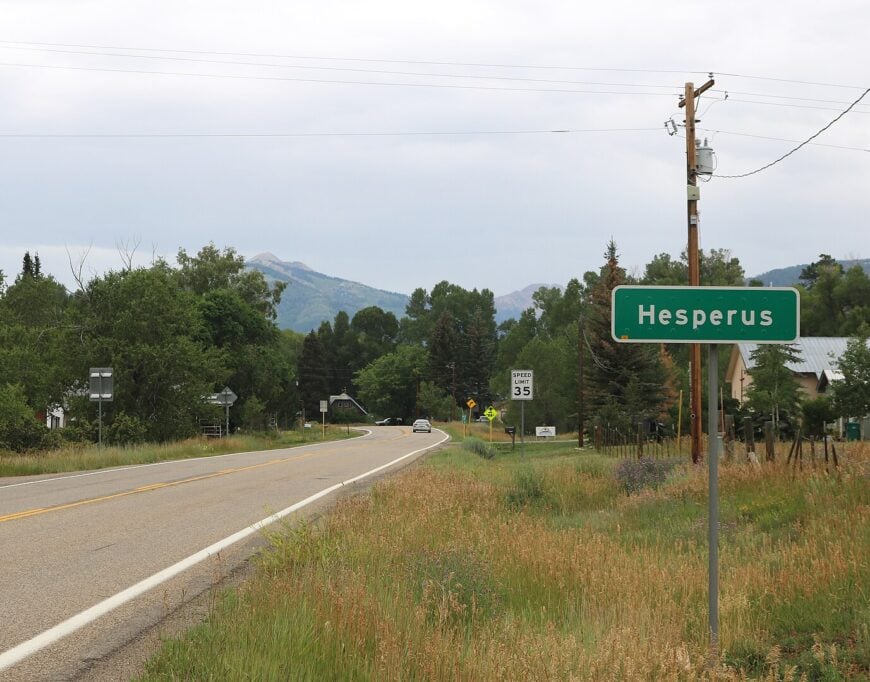
Hesperus is a peaceful community with a population of around 2,100 people spread out over rolling hills and open spaces. I love visiting Hesperus for its incredible night skies, where stargazing becomes a magical experience due to the minimal light pollution.
The area offers outdoor activities like hiking, horseback riding, and skiing at the nearby Hesperus Ski Area, perfect for those who enjoy a quiet connection with nature.
Agriculture and ranching are the main industries here, contributing to its rustic charm and laid-back lifestyle. What makes Hesperus secluded is its vast countryside, where homes are spaced far apart, offering plenty of privacy and tranquility away from crowded urban centers.
Where is Hesperus?
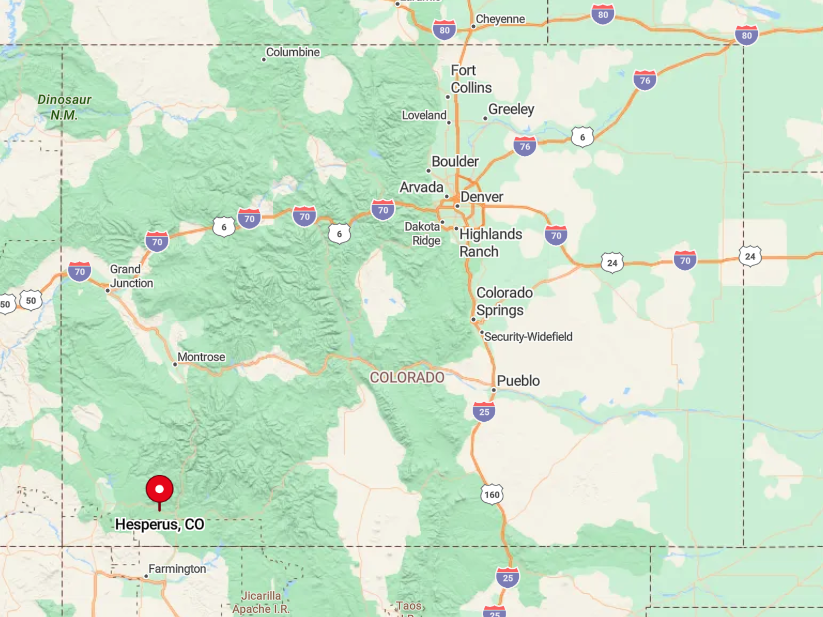
Located about 11 miles west of Durango along Highway 160, Hesperus sits comfortably at the base of the La Plata Mountains in Southwest Colorado. Its seclusion is heightened by the surrounding open lands and minimal commercial development, which keeps the area calm and undeveloped.
To get there, I usually drive west from Durango, enjoying the scenic route that winds through picturesque landscapes and offers glimpses of wildlife. The journey itself feels like a retreat, leading to a place where the quiet of the countryside envelops you completely.
9. Vallecito: Lakeside Seclusion Amidst Lush Forests
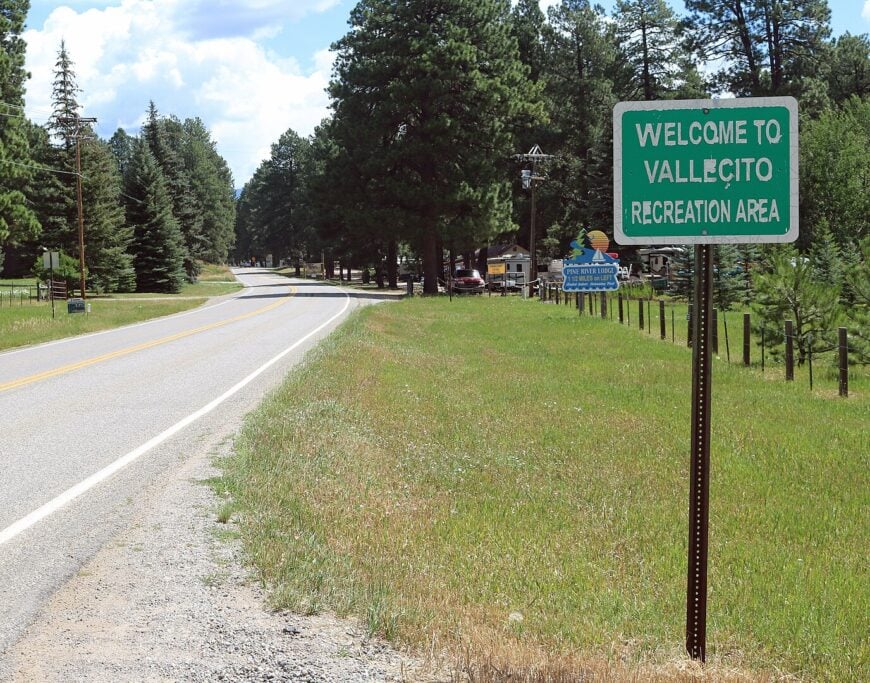
With a small population of around 400 residents, Vallecito is a hidden gem tucked away beside the serene Vallecito Lake. I often find solace here, enjoying activities like kayaking, fishing, and hiking along the numerous forest trails that surround the area.
The town doesn’t have a significant industrial presence, which adds to its peaceful atmosphere, but tourism related to outdoor recreation keeps the local economy thriving.
Vallecito’s seclusion comes from its remote location amidst the San Juan National Forest, where dense pine forests and the sparkling lake create a natural barrier to the outside world.
Where is Vallecito?
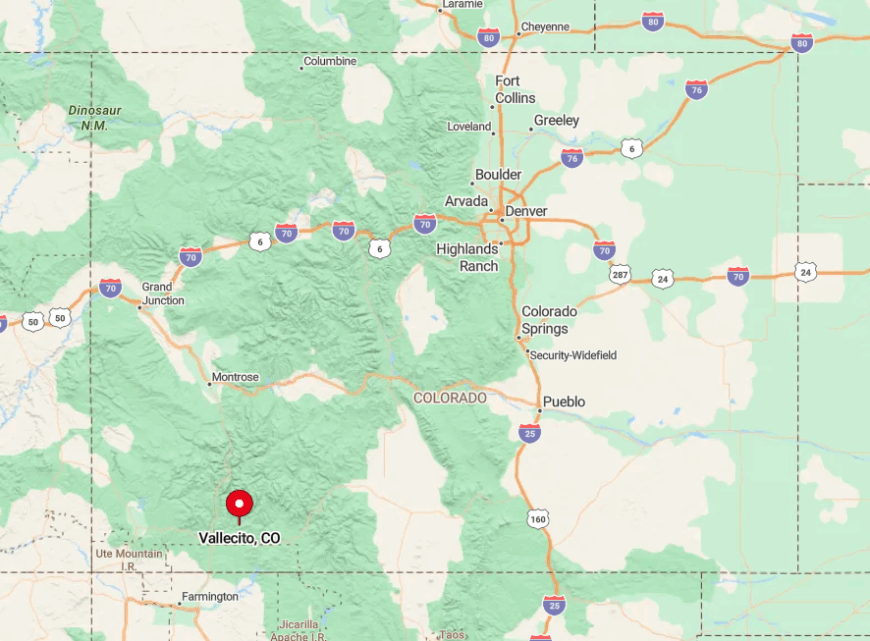
Vallecito is located about 18 miles northeast of Durango, nestled deep within the San Juan National Forest. Its secluded nature is due to the winding mountain roads that lead to it, making it feel far removed from the hustle of nearby towns.
I usually take County Road 240 to reach Vallecito, a scenic drive that takes me through towering forests and along the rushing waters of the Florida River. The journey emphasizes the town’s isolation and the pristine natural beauty that surrounds it.
8. Placerville: Gateway to the Mountains Away from the Crowds
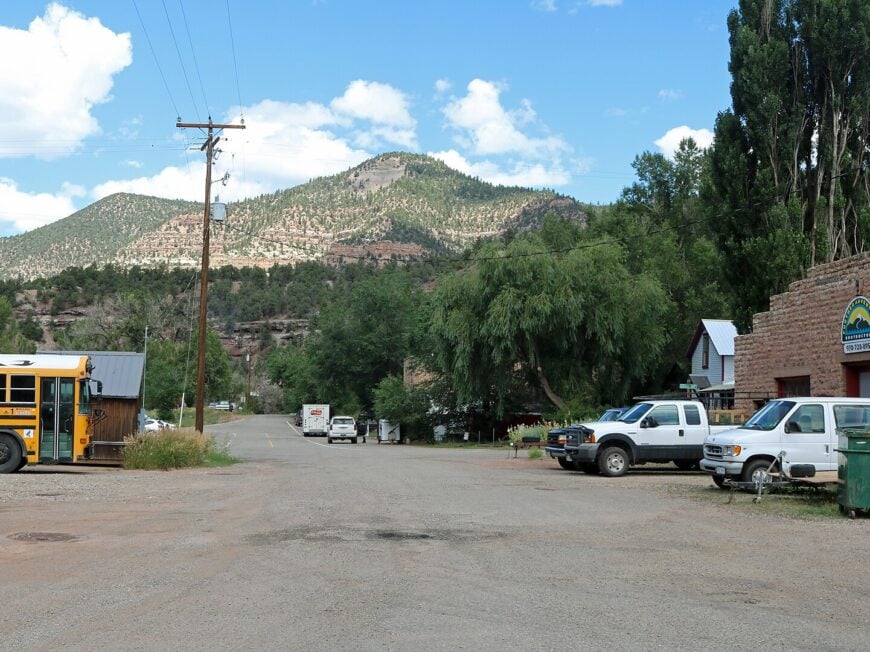
Placerville is a quaint town with a population of just over 700 people, offering a peaceful haven surrounded by stunning mountain vistas. When I’m in Placerville, I enjoy exploring the nearby trails and taking in the breathtaking views of the Uncompahgre National Forest.
The town’s history is rooted in mining, but today, it’s a quiet residential area with a focus on outdoor recreation and small-scale agriculture. What sets Placerville apart is its sparse population and minimal tourist traffic, making it an ideal spot for those seeking solitude amidst nature’s grandeur.
Where is Placerville?

Situated along Highway 145, Placerville lies about 17 miles northwest of Telluride in Southwest Colorado. Its secluded feel comes from its location at the junction of the San Miguel and Leopard Creek rivers, surrounded by rugged terrain and limited development.
To reach Placerville, I drive through scenic mountain passes that highlight the remoteness of the area. The lack of major commercial establishments and the expansive natural landscapes contribute to the town’s peaceful ambiance.
7. Redvale: Rustic Living in the Heart of Naturalscapes
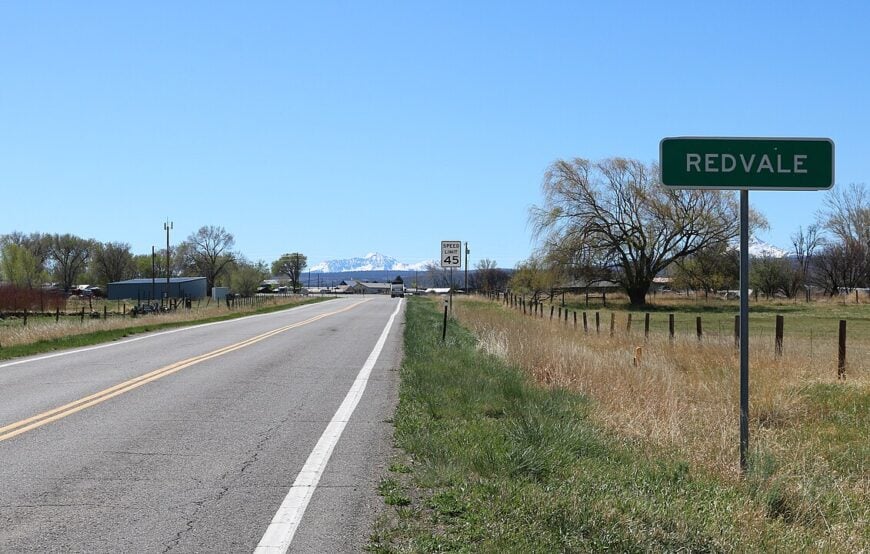
Redvale is a small, unincorporated community with a population of around 250 people, embodying the essence of rural living. I appreciate Redvale for its agricultural roots, where ranching and farming are the mainstays of the local economy.
The town offers a tranquil environment with open fields, meandering streams, and a close-knit community. Its seclusion is evident in the vast distances between homes and the lack of urban development, providing a retreat into rustic simplicity and quiet living.
Where is Redvale?
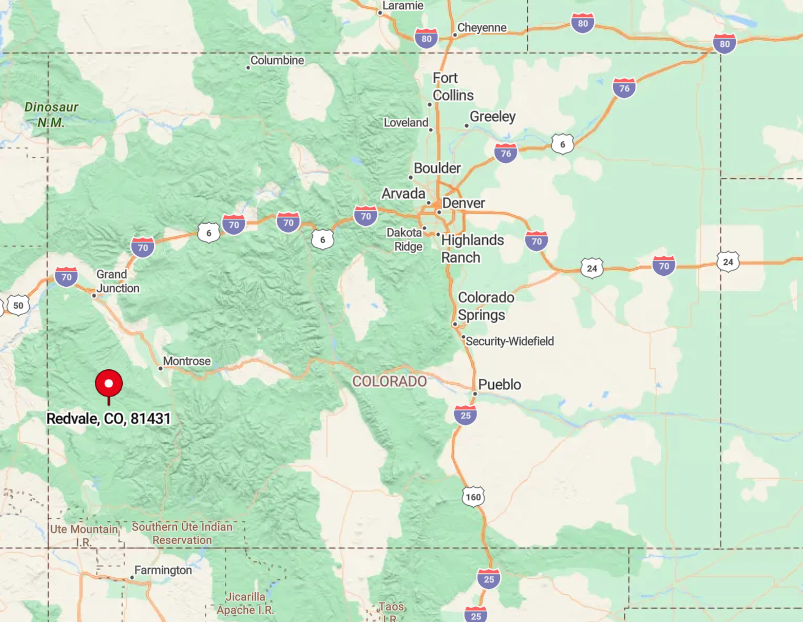
Located along Highway 145, Redvale sits about 25 miles northwest of Norwood in Montrose County. The town’s remoteness is accentuated by the surrounding open landscapes and limited infrastructure.
When I travel to Redvale, the journey takes me through expansive plains and gentle rolling hills, emphasizing the area’s isolation. Access is primarily by car, with the nearest larger towns being a considerable distance away, ensuring a peaceful and undisturbed atmosphere.
6. Ophir: Mountain Majesty in a Quiet Alpine Village
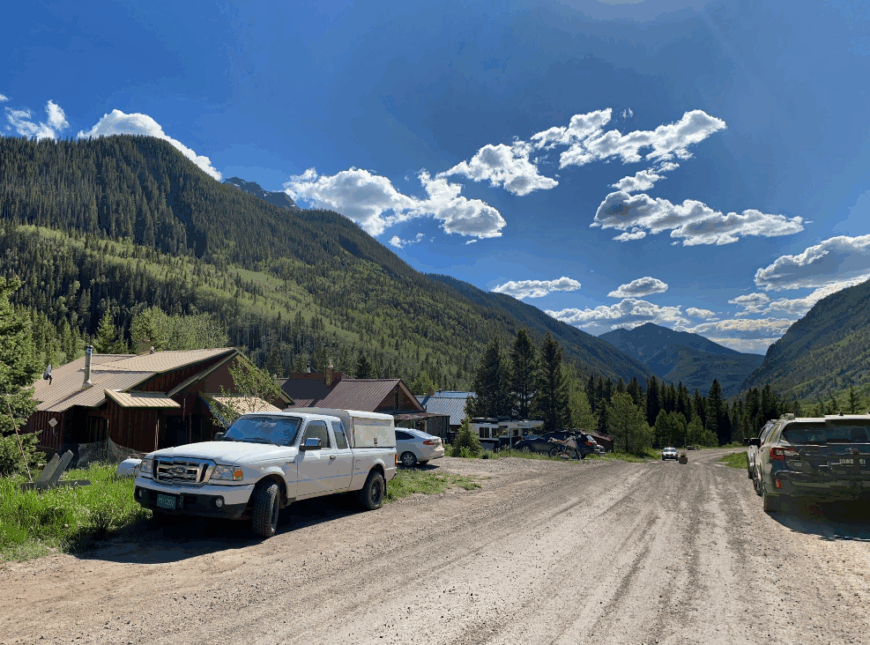
Home to about 180 residents, Ophir is a tiny alpine village nestled high in the San Juan Mountains. I find Ophir enchanting for its stunning mountain scenery and the sense of serenity that comes from being surrounded by towering peaks.
Outdoor enthusiasts can enjoy backcountry skiing, hiking, and mountaineering, making it a haven for adventure seekers who value privacy. The town has no commercial industries, preserving its untouched natural beauty and tranquil environment.
Ophir’s seclusion stems from its high elevation and challenging terrain, which keep it off the beaten path and away from the crowds.
Where is Ophir?
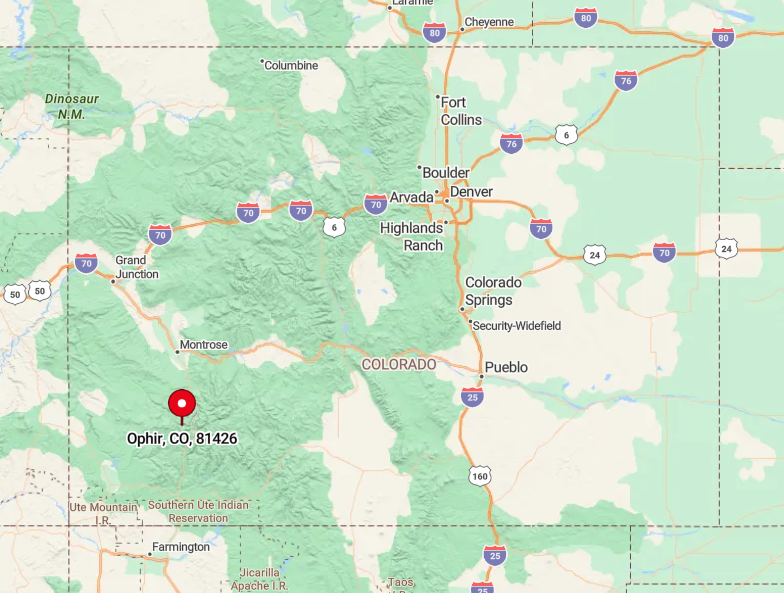
Ophir is situated about 13 miles south of Telluride, accessible via a narrow mountain road that offers breathtaking views. Its location deep within the mountains enhances its isolation, as heavy snowfall and rugged landscapes can make access difficult at times.
I usually prepare thoroughly before heading to Ophir, ensuring my vehicle is equipped for the journey, particularly in winter months. The remote setting and limited accessibility make Ophir a true escape into alpine tranquility.
5. Paradox: A Secluded Oasis Amidst Red Rock Canyons
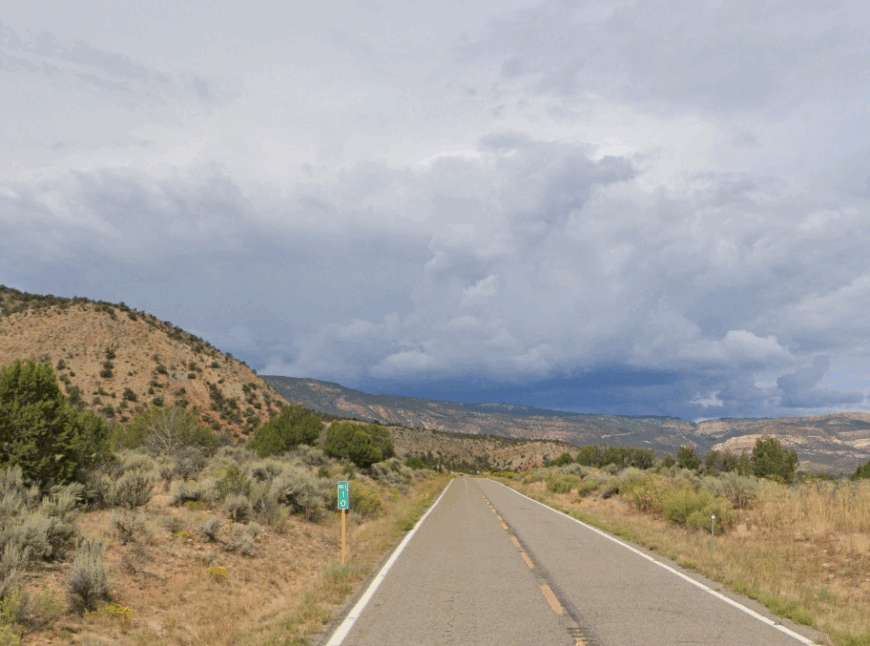
Paradox is a small community with approximately 110 residents, hidden within a valley surrounded by striking red rock formations. When I visit Paradox, I’m struck by its unique landscape and the quiet solitude it offers.
Outdoor activities include exploring the Paradox Valley, hiking in the canyons, and discovering ancient petroglyphs. Agriculture is a small part of the local economy, but the town remains largely untouched by significant industry.
The remoteness of Paradox is accentuated by its rugged surroundings and minimal population, creating an oasis of peace away from the modern world.
Where is Paradox?
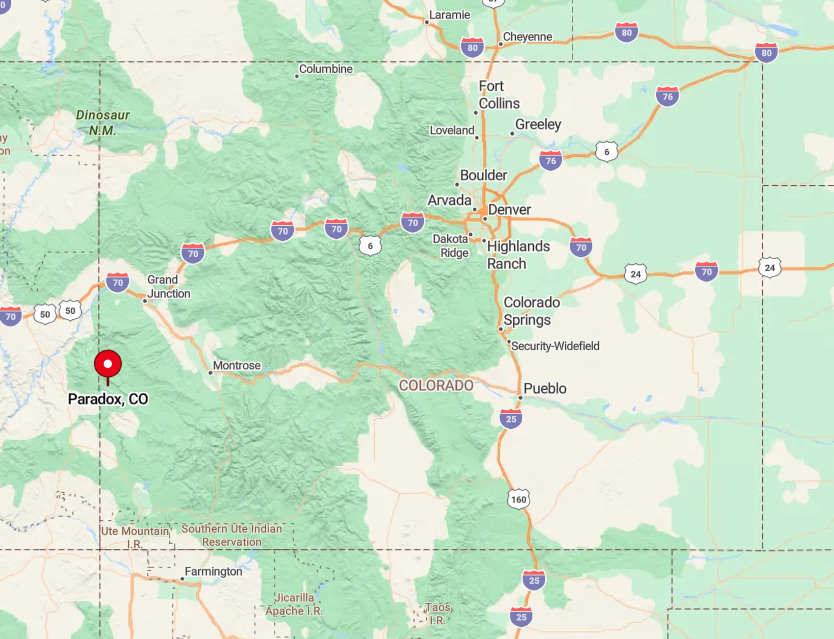
Located in Montrose County near the Utah border, Paradox lies along Highway 90, far from major cities and towns. Its secluded nature is due to the encompassing red rock canyons and the absence of major roadways.
Getting to Paradox involves a long drive through desolate yet beautiful landscapes, which I find both humbling and serene. The journey itself underscores the town’s remoteness, making it a perfect destination for those seeking isolation amid dramatic natural scenery.
4. Powderhorn: Peaceful Meadows Under the Wide Open Sky
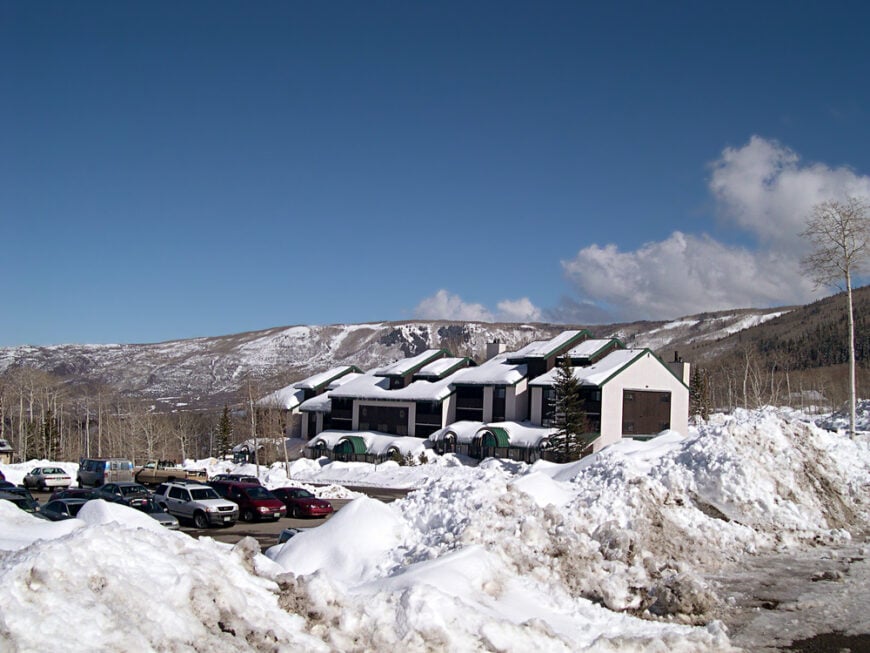
Powderhorn is a tiny, unincorporated community with a population of about 90 people, characterized by its open meadows and tranquil environment. I enjoy the simplicity of life here, where outdoor activities like fishing in Cebolla Creek and hiking in the surrounding hills are daily pleasures.
The area relies on ranching and small-scale agriculture, preserving its rustic charm. Powderhorn’s seclusion is evident in its sparse population and expansive landscapes, providing an idyllic retreat under the vast Colorado sky.
Where is Powderhorn?
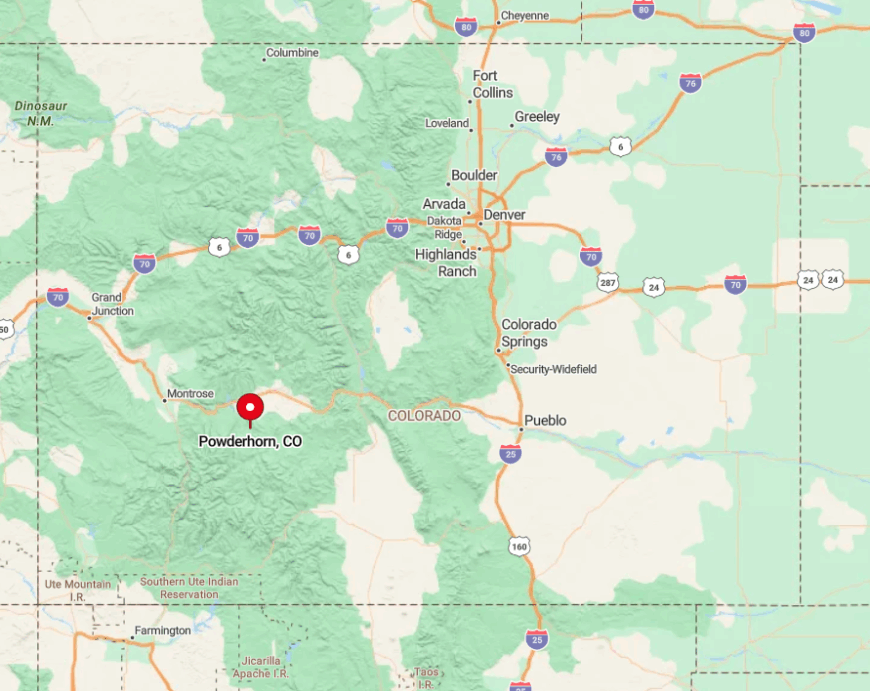
Situated in Gunnison County along Highway 149, Powderhorn is about 35 miles southwest of Gunnison. Its remote location is enhanced by the surrounding meadows and the minimal development in the area.
When traveling to Powderhorn, I often feel a sense of peace as the road winds through untouched natural beauty, away from the noise of urban life. The limited accessibility and distance from larger towns contribute to Powderhorn’s serene and secluded atmosphere.
3. Norwood: Expansive Vistas and Unspoiled Wilderness
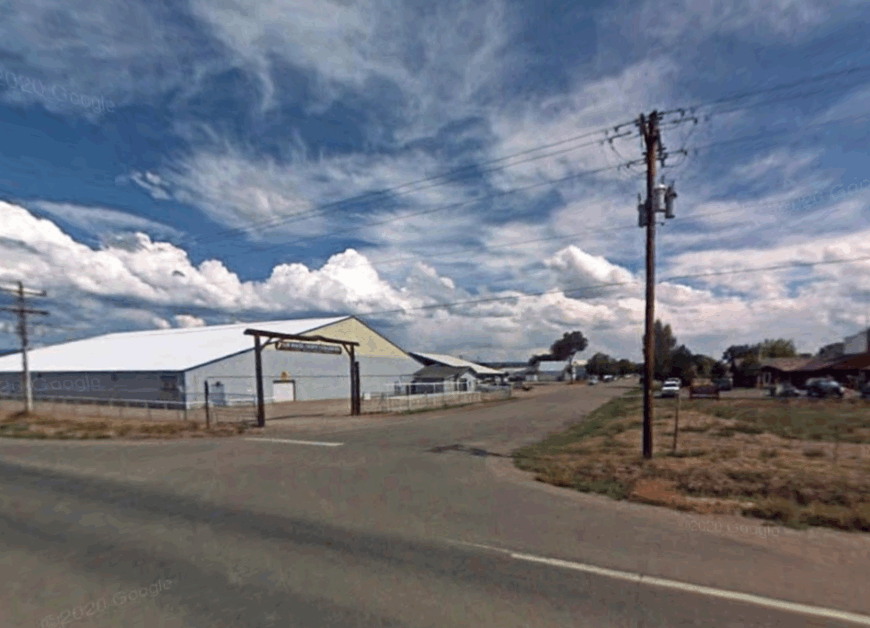
Norwood is a small town with a population of around 550 people, offering expansive views and access to unspoiled wilderness areas. I find Norwood appealing for its proximity to forests, rivers, and the vast Lone Cone peak, making it ideal for hiking, fishing, and camping.
Agriculture, particularly ranching and farming, plays a significant role in the local economy, maintaining the town’s rural character. Norwood’s seclusion comes from its location on Wright’s Mesa and the surrounding open spaces that stretch as far as the eye can see.
Where is Norwood?
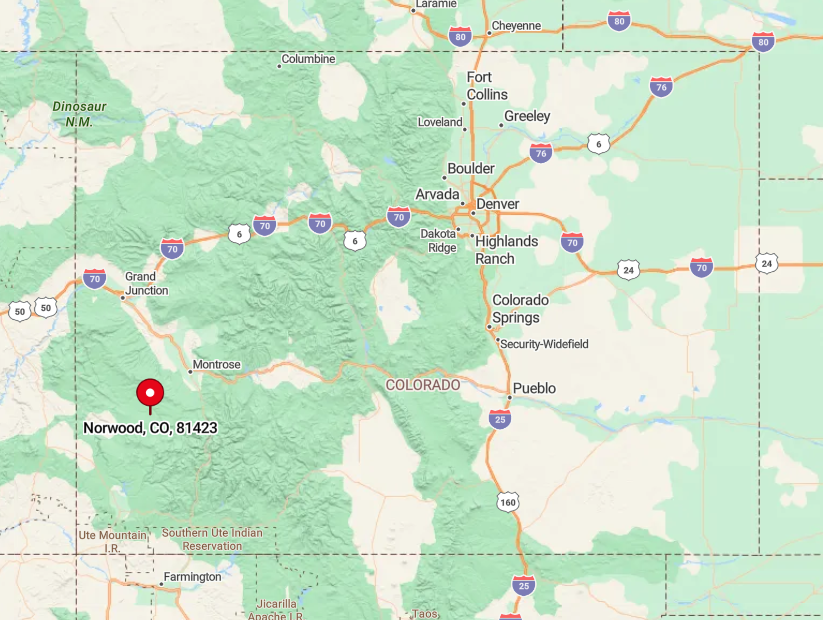
Located along Highway 145, Norwood is about 33 miles northwest of Telluride in San Miguel County. Its secluded feel is due to the extensive natural areas that envelop the town and the lack of commercial development.
Getting to Norwood involves a scenic drive through mesa landscapes and canyons, which I always find peaceful and rejuvenating. The town’s remote setting provides a sense of escape and a deep connection with the natural world.
2. Rico: A Hidden Gem Nestled in the San Juan Mountains
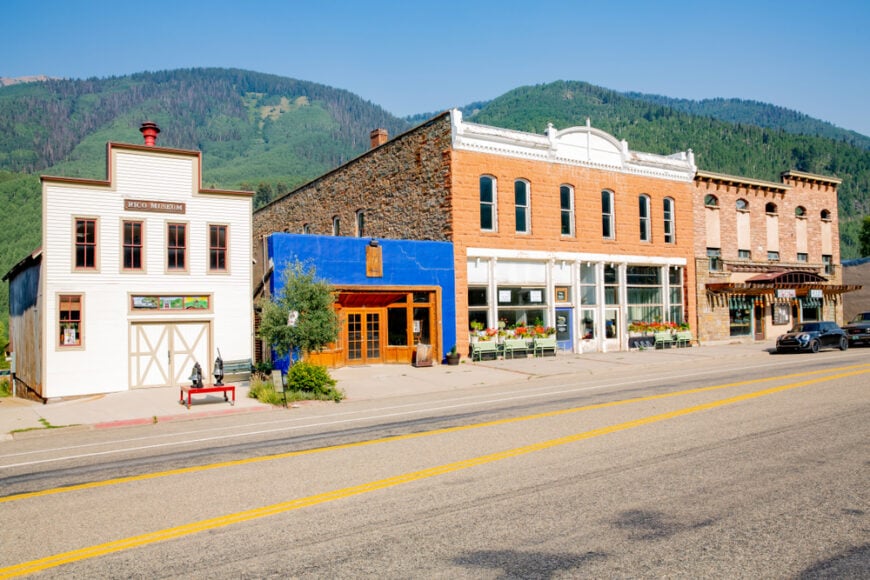
Rico is a historic mining town with a population of approximately 230 people, nestled deep within the San Juan Mountains. I enjoy Rico’s rich history and its secluded mountain setting, where the air is crisp, and the surroundings are profoundly quiet.
Outdoor activities include hiking, mountain biking, and soaking in the nearby hot springs, offering relaxation amidst nature. The town has limited industry, with a focus on preserving its historical sites and natural environment.
Rico’s seclusion is a result of its high elevation and the rugged terrain that surrounds it, keeping it distanced from more developed areas.
Where is Rico?
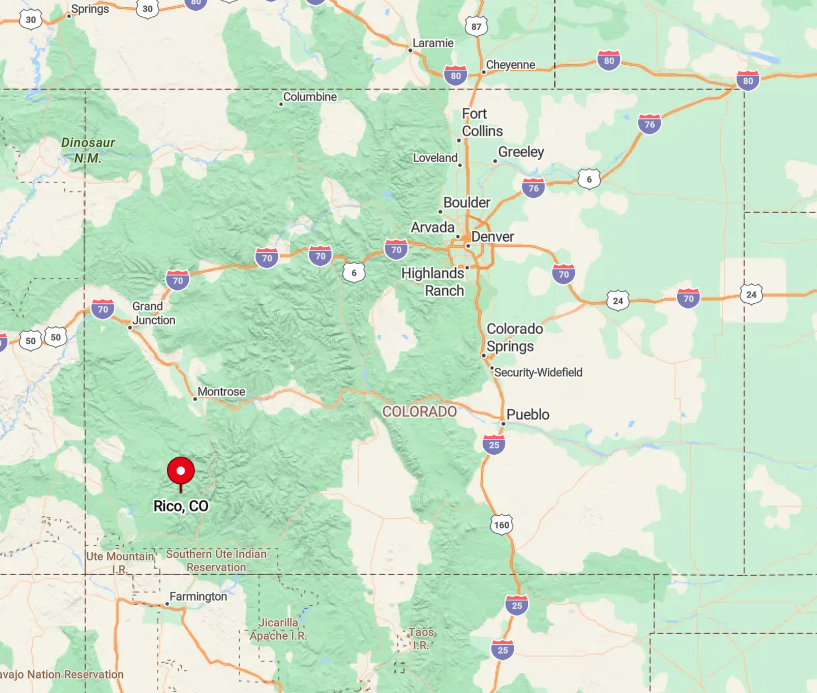
Situated along Highway 145, Rico is about 27 miles south of Telluride. The drive to Rico winds through mountainous roads that highlight the area’s remoteness and breathtaking scenery.
When I travel there, the journey itself feels like an adventure, emphasizing the town’s hidden nature. The limited accessibility due to weather conditions at times adds to Rico’s secluded charm, making it a perfect getaway for those seeking peace in the mountains.
1. Dove Creek: Serenity in Colorado’s Pinto Bean Capital
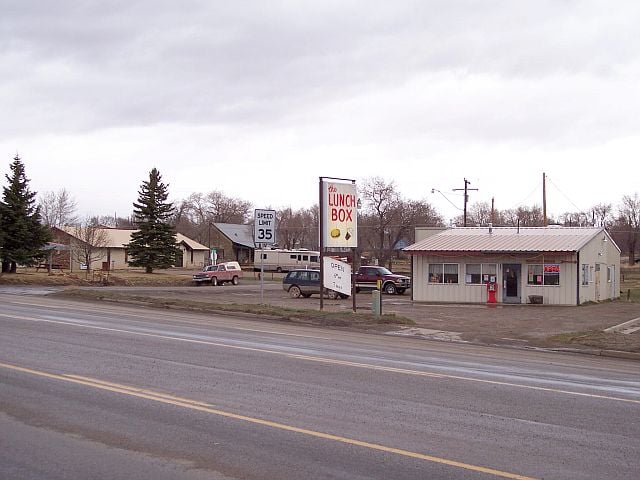
Dove Creek, with a population of around 700 people, is known as Colorado’s “Pinto Bean Capital.” I appreciate the serenity of this town, surrounded by expansive farmlands and open skies that seem to stretch endlessly.
Activities here include exploring local trails, visiting historical sites, and enjoying the annual Dove Creek Pick ‘n’ Hoe festival, which adds a touch of community spirit. Agriculture is the main industry, focusing on beans and other crops, reinforcing its rural character.
Dove Creek’s seclusion stems from its distance from major urban centers and the vast open landscapes that envelop the town, offering a quiet charm that’s hard to find elsewhere.
Where is Dove Creek?
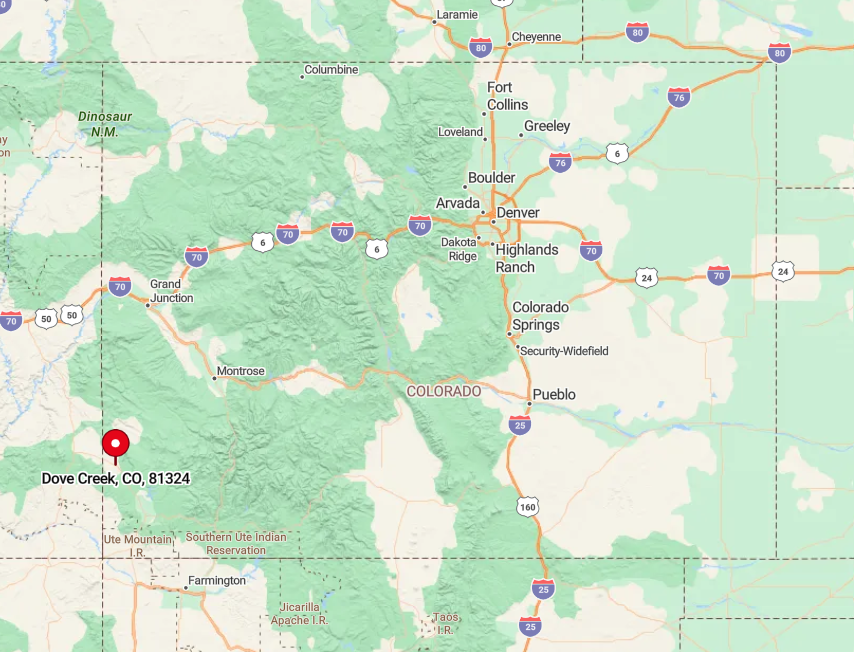
Located along Highway 491, Dove Creek sits in Dolores County near the Utah border. Its remote position far from larger cities enhances its secluded atmosphere. When I head to Dove Creek, the journey takes me through sweeping vistas of farmland and high desert terrain.
Access is primarily via highway, but the sparse traffic and expansive surroundings make the town feel wonderfully isolated. Dove Creek’s peaceful environment and unhurried pace make it an ideal destination for those wanting to escape into the tranquility of rural Southwest Colorado.






